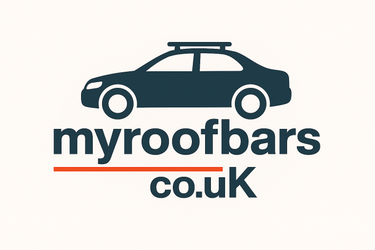on orders over £40
How to Fit Roof Bars: Step-by-Step & What to Avoid
So, you've picked your perfect roof bars — now comes the important bit: fitting them properly. Whether you're heading off on a camping trip or just need more storage space, correct installation ensures safety, performance, and peace of mind.
Here’s a step-by-step guide to fitting your roof bars, plus the most common mistakes to avoid.
🧰 What You’ll Need
-
Your roof bar kit (includes 2 bars + fittings)
-
Vehicle-specific foot packs or clamps
-
Allen key or torque wrench (usually included)
-
Clean cloth
-
Ladder or step if needed
✅ Step-by-Step: How to Fit Roof Bars
1. Identify Your Roof Type
-
Raised rails: Bars clamp around the rail
-
Flush rails: Bars use custom foot packs
-
No rails: Use fixed points or door clamps
🔍 Not sure? Use our Vehicle Lookup Tool
2. Clean the Roof Area
Wipe down the contact points to remove dirt or grit. This helps with grip and protects your paintwork.
3. Assemble the Bars
-
Attach foot packs to each bar
-
If using T-tracks (on aluminium bars), slide fittings into place
-
Check spacing in the manual (usually 70–100 cm apart)
4. Position the Bars
-
Place them across the roof, lining up with rail mount points or fixed holes
-
Make sure they’re level and symmetrical
-
For door clamp systems, centre the bars before tightening
5. Tighten Everything Securely
-
Use the provided tool or torque wrench
-
Avoid overtightening — but don’t leave anything loose
-
Double-check lock mechanisms if included
6. Test for Movement
Gently shake both bars — there should be no give or wobble. If anything feels loose, readjust and retighten.
🔐 Lock the bars if you have a security key set.
🚫 Common Mistakes to Avoid
❌ 1. Ignoring Your Roof Load Limit
Check your car manual — most vehicles have a limit between 60–100kg, including the bars, gear, and rack.
❌ 2. Incorrect Bar Spacing
Too close or too far apart = unstable load. Follow the guide for spacing.
❌ 3. Mixing Up Front and Rear Bars
Some kits have different lengths or fittings — always label and check.
❌ 4. Not Rechecking After Driving
After your first drive, recheck the fittings. They can shift slightly on first use.
🧠 Pro Tips
-
Always remove bars when not in use long-term to reduce drag and noise
-
Store the bars in their original box or wrap them in a blanket
-
Regularly clean bar surfaces and contact points to prevent rust or wear
🔗 Related: How to Reduce Wind Noise from Roof Bars
